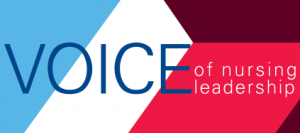
VOICE | September 2020
Breadcrumb
Best Practices in Pandemic Response
Learn how nurse leaders from across the country are responding to the COVID-19 pandemic.

The COVID-19 pandemic has impacted our lives in so many different ways. The lingering uncertainty, the toll on our well-being, and the way that we deliver health care is forever changed. As resourceful as nurse leaders are, we are not immune to the challenges posed by the pandemic. Our ability to innovate, mobilize, advise our communities and advocate for our staff has been remarkable...Continue Reading.

The COVID-19 pandemic response demanded that nurse leaders make decisions in a constantly changing landscape. This article outlines leadership approaches that can serve leaders faced with challenges and includes two examples from the field...Continue Reading.

In 2020, identified as the Year of the Nurse and Midwife (a celebration of Florence Nightingale’s 200th birthday), it seems almost surreal that we would be faced with a pandemic of the novel coronavirus. Nurses, as in the time of Florence Nightingale, provide a pivotal role in infection prevention, infection control, isolation, containment and public health...Continue Reading.

Communication challenges during a crisis are not new to health care in the United States. In fact, over the last 100 years, disasters, including pandemics, served to highlight the vital role of communication to help staff understand, engage and rise to the challenges needed to provide care to our communities. COVID-19 has offered a uniquely global challenge with equally unique local challenges...Continue Reading.

This article presents two examples of academic-practice partnerships that continued during the COVID-19 pandemic. These partnerships enabled nursing students to obtain clinical hours despite the decreased census in hospitals created by the pandemic. This experience also yielded recommendations for schools and their health care partners in the event of future public health crises...Continue Reading.

The number of Americans age 65 and over is rapidly increasing and projected to nearly double by 2060. In addition, the seniors in the age group requiring nursing home care will almost double in the next 10 years (American Hospital Association [AHA], 2020), highlighting the demand for age-friendly, quality long-term support models of care, particularly in skilled nursing facilities (SNFs)...Continue Reading.
This bi-monthly AONL member magazine provides thought-provoking articles and perspectives on key issues affecting you.

OPEN TO AONL MEMBERS AND NONMEMBERS
COVID-19 erupted across the nation putting unprecedented stress on hospitals. In mid-March 2020, statistical models from the Institute of Health Metrics and Evaluation at the University of Washington in Seattle projected...Continue Reading.



